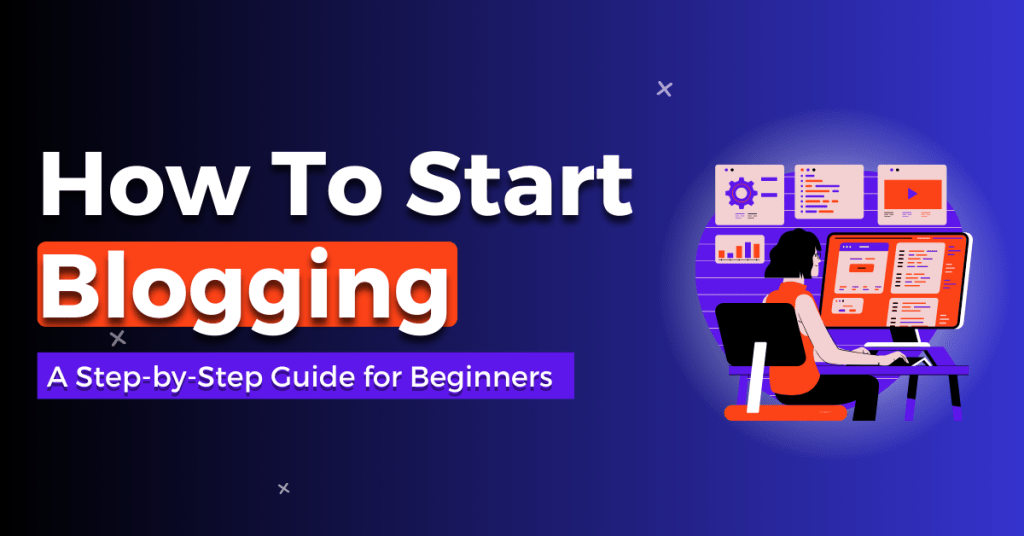How to Start a Blog has become a popular way to share information, express creativity, and even generate income. If you’re considering starting a blog, you’re in the right place. This step-by-step guide for beginners, presented by world.pakchronicle.com, will walk you through everything you need to know to start a successful blog.

1. Choose Your Blog’s Niche
The first step in starting a blog is to decide what you want to write about. Your blog’s niche should be something you’re passionate about and knowledgeable in. Popular niches include travel, food, technology, fashion, personal development, and finance. Consider your interests and expertise to find a niche that you will enjoy writing about consistently.
Tips for Choosing a Niche
- Passion and Interest: Choose a topic you are passionate about to keep you motivated.
- Knowledge and Expertise: Select a niche where you have some expertise to establish credibility.
- Audience Demand: Research to ensure there is an audience interested in your niche.
2. Select a Blogging Tips Platform {How to Start a Blog}
Next, you need to choose a platform to host your blogging tips. WordPress.org is one of the most popular choices because of its flexibility and customization options. Other platforms include Blogger, Wix, and Squarespace.
Why Choose WordPress.org
- Flexibility: Highly customizable with thousands of themes and plugins.
- Ownership: Full control over your content and site.
- Scalability: Can grow with your blog as you expand.
3. Pick a Domain Name and Hosting
Your domain name is your blog’s address on the internet (e.g., www.yourblogname.com). Choose a name that reflects your niche and is easy to remember. Once you have a domain name, you’ll need a hosting provider to store your blog’s files. Popular hosting providers include Bluehost, SiteGround, and HostGator.
Tips for Choosing a Domain Name
- Keep It Simple: Easy to type and remember.
- Relevant: Reflects your blog’s niche or topic.
- Avoid Numbers and Hyphens: These can be confusing and hard to remember.
4. Set Up Your Blog
Once you have a domain name and hosting, it’s time to set up your blog. If you chose WordPress.org, you’ll need to install it on your hosting account. Most hosting providers offer one-click WordPress installation.
Steps to Set Up WordPress
- Log into your hosting account.
- Find the WordPress installation option (usually under the website or software section).
- Follow the prompts to install WordPress.
- Log into your new WordPress dashboard.
5. Choose and Customize Your Theme
Your blog’s theme determines its appearance and layout. WordPress offers thousands of free and premium themes. Choose a theme that suits your niche and customize it to match your brand.
Customizing Your Theme
- Header and Logo: Add a custom header and logo.
- Colors and Fonts: Choose colors and fonts that reflect your brand.
- Layout: Customize the layout to make your blog user-friendly.
6. Install Essential Plugins
Plugins are tools that add functionality to your WordPress blog. There are plugins for SEO, social media sharing, security, and more. Some essential plugins for new bloggers include:
Essential Plugins
- Yoast SEO: For search engine optimization.
- Akismet: To prevent spam comments.
- Jetpack: For security, performance, and site management.
- Social Warfare: For social media sharing.
7. Create Quality Content
Content is the heart of your blog. Start by creating a few high-quality posts that provide value to your readers. Focus on creating engaging, informative, and well-researched content.
Tips for Creating Quality Content
- Solve Problems: Address your audience’s pain points.
- Be Authentic: Write in your unique voice and be genuine.
- Use Visuals: Include images, videos, and infographics to enhance your posts.
8. Promote Your Blog
Once you have some content, it’s time to promote your blog to attract readers. Use social media, email marketing, and SEO to drive traffic to your site.
Promotion Strategies
- Social Media: Share your posts on platforms like Facebook, Twitter, Instagram, and Pinterest.
- SEO: Optimize your posts for search engines using keywords and meta descriptions.
- Email Marketing: Build an email list and send newsletters to your subscribers.
9. Engage with Your Audience
Building a community around your blog is essential for its growth. Engage with your readers by responding to comments, asking for feedback, and encouraging discussion.
Ways to Engage
- Respond to Comments: Show readers you value their input.
- Social Media Interaction: Engage with followers on social media platforms.
- Surveys and Polls: Get feedback and understand your audience’s preferences.
10. Monetize Your Blog
Once your blog has a steady stream of traffic, you can start monetizing it. There are several ways to make money from your blog, including advertising, affiliate marketing, sponsored posts, and selling products or services.
Monetization Methods
- Advertising: Use platforms like Google AdSense to display ads.
- Affiliate Marketing: Promote products and earn a commission on sales.
- Sponsored Posts: Collaborate with brands to create sponsored content.
- Selling Products/Services: Offer your own products or services to your audience.
Conclusion
Starting a blogging guide for beginners can be a rewarding and profitable venture if done correctly. By following this step-by-step guide by world.pakchronicle.com, you can create a successful blog that engages readers and generates income. Remember to stay patient, consistent, and passionate about your niche, and you’ll be well on your way to becoming a successful blogger.



































